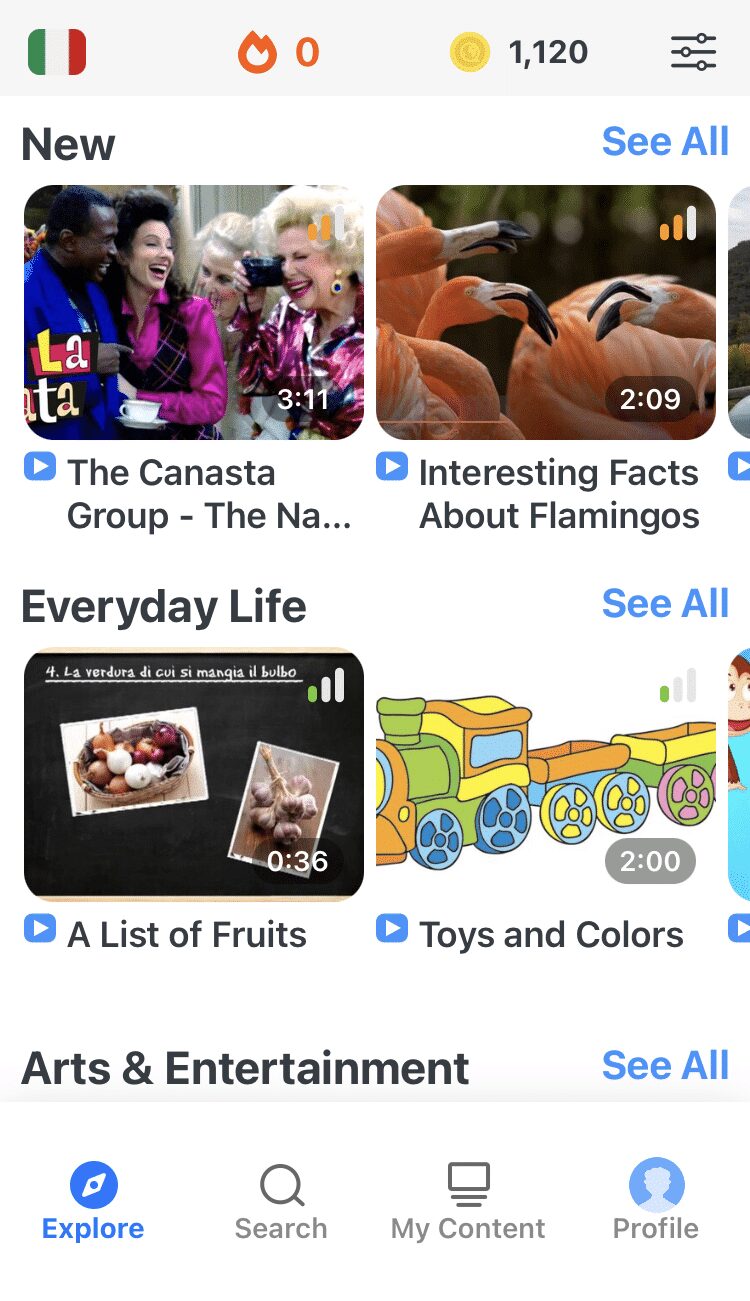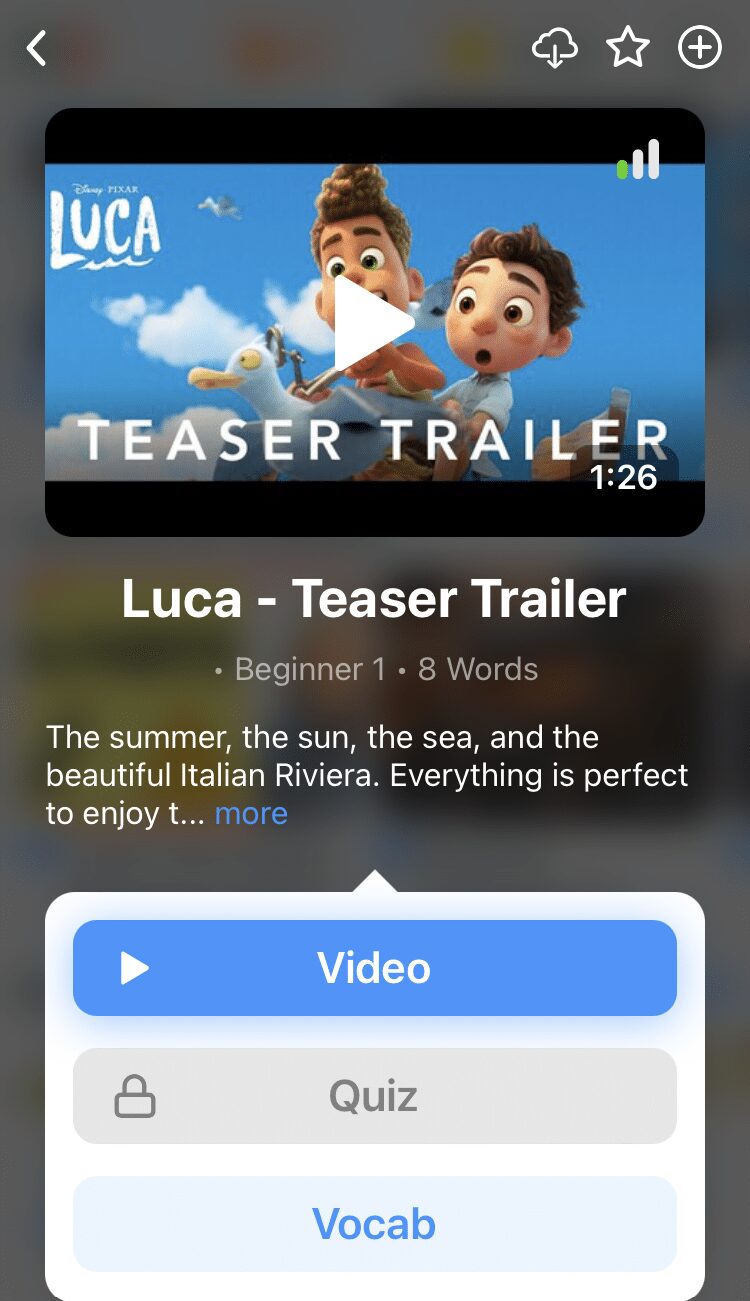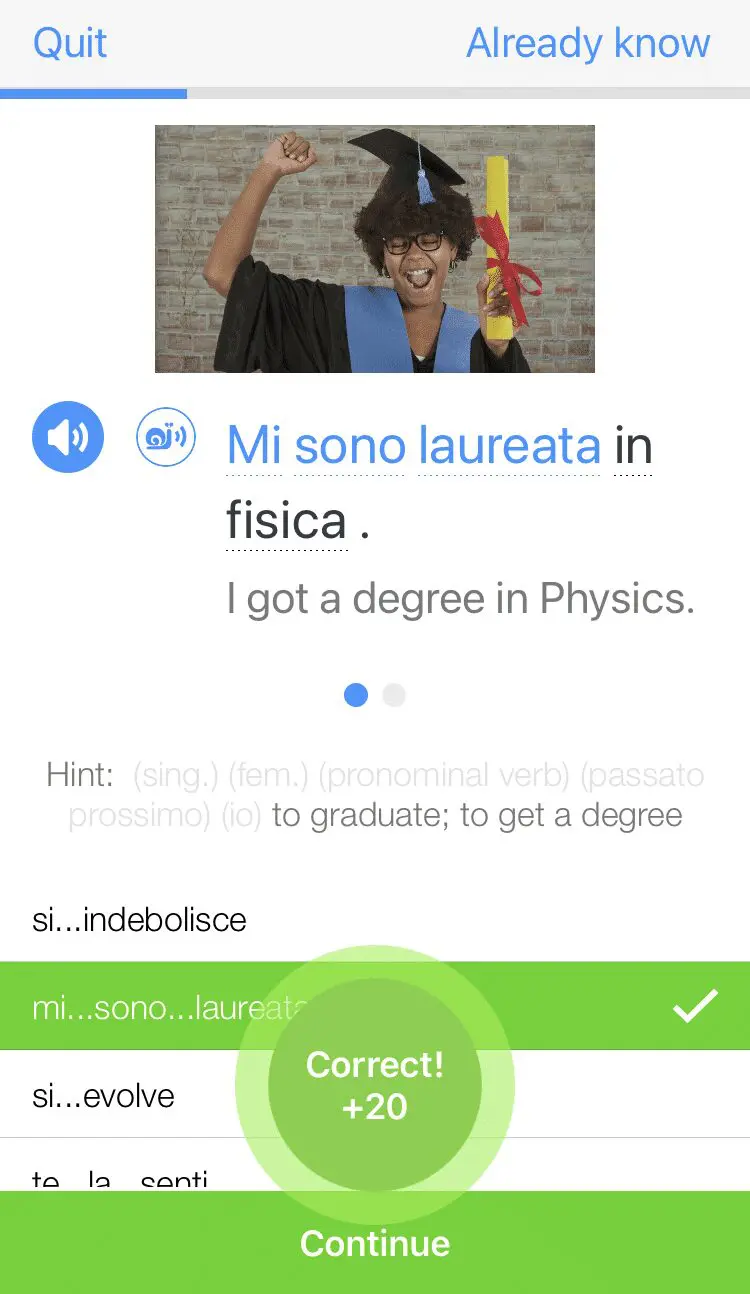Contents
- 1. Cut Down on Conjugations with Modal Verbs
- 2. Ask Questions Just by Changing Your Tone of Voice
- 3. Don’t Worry About Possessive Adjectives for Body Parts
- 4. Focus on Verb Endings Rather Than Pronouns
- 5. Use the Continuous Form for a Simplified Present Tense
- 6. Look for Verbs of Movement in the Past Tense
- The Best Way to Learn Italian Grammar with Shortcuts
- And One More Thing...
How to Learn Italian Grammar

Italian grammar is an important but sometimes challenging part of learning the language.
To make learning Italian grammar a bit easier, I consulted some experienced Italian learners living in Italy and asked them about the shortcuts they used to help them speak, learn and adapt to their new language.
These tips should get you around some of the trickier grammar roadblocks and speed down the path to fluency.
Download: This blog post is available as a convenient and portable PDF that you can take anywhere. Click here to get a copy. (Download)
1. Cut Down on Conjugations with Modal Verbs
Using modal verbs in Italian can greatly expand your speaking capabilities. They allow for the expression of a lot of different ideas without the necessity of learning a bunch of verb conjugations.
The most common modal verbs in Italian are potere (to be able to/can), dovere (to have to) and volere (to want). These verbs are usually followed by another verb in the infinitive form. This means that you can use the conjugated form of a modal verb and simply follow it with an infinitive form in a variety of situations.
Here’s an example. Imagine that you want to say these three phrases in Italian:
“I work on Monday.”
“You go to Italian class on Tuesday.”
“We play tennis on Saturday.”
This requires three different verbs, all of which are conjugated differently:
Lavoro lunedì. (I work on Monday.)
Andate a lezione d’italiano il martedì (You go to Italian class on Tuesday.)
Giochiamo a tennis sabato. (We play tennis on Saturday.)
If instead, we use the modal verb dovere (to have to) before the main verb, we only need to conjugate the modal verb and can leave the others in the infinitive:
Devo lavorare lunedì. (I have to work on Monday.)
Dovete andare a lezione d’italiano il martedì. (You have to go to Italian class on Tuesday.)
Dobbiamo giocare a tennis sabato. (We have to play tennis on Saturday.)
Modals allow for the use of a vast array of verbs without necessarily knowing how to conjugate them.
2. Ask Questions Just by Changing Your Tone of Voice
Italian phrases in the interrogative form don’t change their form or structure. They look exactly like positive or negative phrases.
The way you ask a question while speaking Italian is simply by changing the tone of your voice so that it rises at the end of a sentence. Che facile! (How easy!)
We do this in English as well, occasionally, usually to show incredulity or disbelief. For instance, if you caught your vegetarian friend chowing down on some steak, you might say: “You’re eating meat!?”
Here are some examples in Italian (the bold words indicate when your tone should rise):
Posso avere un cappuccino? (Can I have a cappuccino?)
Dobbiamo fare check-out alle 11:00? (Do we have to check out at 11:00?)
È un albergo economico? (Is it a cheap hotel?)
È già partito il treno? (Has the train already left?)
While the grammar is easy, you’ll still need to be careful because your tone can say a lot. Notice that for the last example, if you don’t change your tone, the phrase will mean “The train has already left,” which could cause some confusion!
If you want to practice your intonation more, you can listen to native speakers and try to mimic their tone. You could use a language learning program like FluentU to practice.
FluentU takes authentic videos—like music videos, movie trailers, news and inspiring talks—and turns them into personalized language learning lessons.
You can try FluentU for free for 2 weeks. Check out the website or download the iOS app or Android app.
P.S. Click here to take advantage of our current sale! (Expires at the end of this month.)
You could also try watching a TV show and pick scenes to practice your tone. Depending on where you watch your show, most streaming services have subtitles in English, and some have them in Italian, too.
Pick a couple of lines. Listen to this a couple of times, then go through and practice repeating each sentence with the speaker or right after. You can read along or turn off the subtitles.
3. Don’t Worry About Possessive Adjectives for Body Parts
Speaking about your body is one of the first things you need to do effectively in a new language. This can seem a bit tricky in Italian, because mastering possessive adjectives like mio, tuo, suo, nostro… (my, your, his/hers, ours) is a big challenge.
Luckily, we don’t need to go into that, because possessive adjectives aren’t used in Italian when referring to the body.
Here’s what we mean:
In English, you’d say:
“My back hurts.”
While in Italian you only need to say:
Ho male alla schiena. (Literally, “I have pain in the back.”)
All you need is the definite article (il, i, l’, la, le, gli, lo [the]) and you’re ready to go.
4. Focus on Verb Endings Rather Than Pronouns
As noted earlier, Italian grammar is based on the changing of verb endings. Because the verb changes for each person (io, tu, lui, lei… [I, you, he, she…]), the subject pronoun becomes redundant and can be dropped.
Let’s take the verb lavorare (to work). The translation of “I work” is io lavoro , and the translation of “you work” is tu lavori .
See how the verb endings change depending on the person? Because the verb ending already indicates the person, you can translate “I work” simply to lavoro and “you work” to lavori.
5. Use the Continuous Form for a Simplified Present Tense
The continuous form in Italian is used to say what you’re doing right now. You can also use the present tense for this, but the continuous is easier because it employs an auxiliary verb, cutting down on conjugations like we did in shortcut number one.
The continuous form is made by combining the verb stare (to be/stay) with the gerund form of another verb. For example:
Sto mangiando un panino. (I’m eating a sandwich.)
Essentially, once you know how to conjugate stare, you can communicate with the continuous form using every verb in the language. All you need is to know how to make the gerund, which is formed (for most verbs) by cutting off the last three letters (-are, -ire or -ere) and replacing them with -ando (for verbs ending in -are) or -endo (for verbs ending in -ire or -ere).
Check out how it works:
Mangiare → Mangiando (to eat → eating)
Partire → Partendo (to leave → leaving)
Correre → Correndo (to run → running)
Using the continuous form can transform the way you talk about what you’re doing and open the doors to a simplified version of conversational Italian.
6. Look for Verbs of Movement in the Past Tense
One of the toughest parts of learning the past tense in Italian is memorizing when to use avere (to have) versus essere (to be) to form your sentence. Here are a couple examples:
Ho fatto una festa. (I had a party.) (Ho is the first person form of avere.)
Sono entrato nell’aula. (I entered the classroom.) (Sono is the first person form of essere.)
So how do we know which verbs form the past tense with avere and which use essere ? Well, one trick is to remember that verbs of movement normally use essere.
If we look at the previous examples, we see that the verb fare (to do/make) doesn’t describe movement. Therefore, it’s conjugated with avere. Entrare (to enter), by contrast, is a verb that denotes movement, so it’s conjugated with essere.
Some other common verbs that use essere to form the past tense are andare (to go), partire (to leave) and uscire (to go out).
The Best Way to Learn Italian Grammar with Shortcuts
Grammar shortcuts can boost your confidence and get you speaking sooner, but they shouldn’t be used in isolation. While they can help you master the basics of Italian grammar more quickly, they don’t really promote varied language and fluent expression.
The tips listed above are designed to get you communicating more often and with more success, so that you can become more comfortable expressing yourself in Italian. This, in turn, will motivate you to keep forging ahead in your Italian learning. They’re not designed to replace focused, thorough Italian studies.
For this reason, it’s best to seek a via di mezzo (middle ground) between studying and shortcuts.
These shortcuts can be used right away, so start incorporating them into your speech and writing as soon as possible! Meanwhile, keep consistently studying grammar rules, exceptions, tenses and conjugations, and make sure to bring those lessons into your communication as well whenever you can.
Eventually, you’ll know enough that you won’t need to rely on these shortcuts—they’ll be just some of the many options you can use when constructing a sentence.
Experienced learners have offered their sage advice on how to learn Italian grammar for this list, but they came to these conclusions after a lot of trial and error (emphasis on the “error”). As you keep studying and reach higher levels, you’ll need to be on the constant lookout for new shortcuts to help you overcome the next grammar hurdle.
Don’t be afraid to try new things and make loads of mistakes. You might pick up a few bruises on the way, but unlocking new secrets based on your own personal learning style and enhancing your fluency are well worth it.
Download: This blog post is available as a convenient and portable PDF that you can take anywhere. Click here to get a copy. (Download)
And One More Thing...
If you're as busy as most of us, you don't always have time for lengthy language lessons. The solution? FluentU!
Learn Italian with funny commericals, documentary excerpts and web series, as you can see here:

FluentU helps you get comfortable with everyday Italian by combining all the benefits of complete immersion and native-level conversations with interactive subtitles. Tap on any word to instantly see an image, in-context definition, example sentences and other videos in which the word is used.

Access a complete interactive transcript of every video under the Dialogue tab, and review words and phrases with convenient audio clips under Vocab.

Once you've watched a video, you can use FluentU's quizzes to actively practice all the vocabulary in that video. Swipe left or right to see more examples of the word you’re on.

FluentU will even keep track of all the Italian words you’re learning, and give you extra practice with difficult words. Plus, it'll tell you exactly when it's time for review. Now that's a 100% personalized experience!
The best part? You can try FluentU for free with a trial.
Start using the FluentU website on your computer or tablet or, better yet, download the FluentU app from the iTunes or Google Play store. Click here to take advantage of our current sale! (Expires at the end of this month.)








